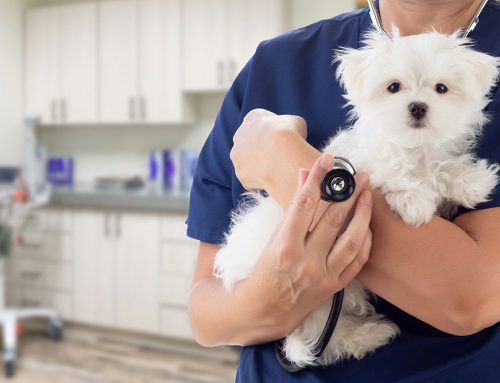In California, wildfires are now a year-round threat to life and property. With circumstances as variable as the Santa Ana winds, preparing and protecting your pet may feel impossible. Fortunately, you don’t have to do it alone. The Family Veterinary Care of Oakdale team has prepared the following guide to help you stay alert, aware, and properly equipped for all fire and smoke-related risks.
Fire risks for pets
Although you and your pet will ideally be far away from a wildfire’s leading edge or have been able to evacuate in sufficient time, small wildfires can ignite anywhere in the appropriate weather conditions. Whether the fire is a natural disaster or the result of a household mishap, curious pets can find themselves in trouble if they get too close to the flames. Others may become disoriented and run away or become trapped and suffer from smoke inhalation, serious burns, and potential loss of life.
Smoke-related risks for pets
Like people, pets are sensitive to smoke inhalation. Given that wildfire smoke can travel hundreds or thousands of miles, smoke-related injury is the most pressing health threat for most pets during a wildfire event. Smoke inhalation irritates a pet’s respiratory and cardiovascular system and can put pets with existing diseases, such as asthma or heart failure, at heightened risk.
When an active fire is in the area, monitor your pet for smoke inhalation-related signs, such as:
- Coughing or gagging
- Rapid, noisy, or labored breathing
- Open-mouth breathing
- Fatigue or weakness
- Eye or nasal discharge
- Disorientation or loss of coordination
- Reduced appetite or thirst
Smoke inhalation compromises your pet’s ability to breathe, which can lead to exhaustion or panic. Pets in obvious respiratory distress require immediate veterinary intervention to minimize long-term complications.
Minimizing your pet’s smoke exposure
When air quality is poor, healthy and health-compromised pets should be kept indoors as much as possible to limit their exposure. Additional steps to help your pet breathe easier include:
- Taking them outside only for bathroom breaks
- Using high-quality air filters in your air conditioning unit
- Keeping doors and windows closed
- Installing an air purifier near your pet’s favorite resting spot
- Limiting indoor activities, such as vacuuming, frying, smoking, burning candles or oils, and spraying household cleaners, which decrease air purity
- Replacing outdoor exercise with indoor games and training
- Staying alert for changes in air quality or fire risk
- Removing debris and fire hazards from your home and yard
One step ahead: Creating a pet-friendly evacuation plan
Avoid heartbreak and worry by creating a fire preparedness plan that includes your pet. While you can’t anticipate every circumstance or contingency, knowing when, how, and where you’ll evacuate can ease some fears and help you and your pet stay calm and safe.
Key aspects of a good pet-friendly evacuation plan include:
- Assembling a pet evacuation kit — Your kit should include:
- Seven-day supply of food, water, and any non-refrigerated medications
- Spare leash and collar or harness
- Pet identification
- First aid kit
- Cleaning items, such as a litter box and litter, waste bags
- Confinement, such as a, crate, carrier, seat belt
- Comfort items, such as a bed, blanket, and toys
Keep your kit in an easy-to-reach area or your vehicle.
- Keeping your pet’s identification and veterinary care current — Ensure your pet wears proper identification, including legible tags with updated contact information. They should also be microchipped and registered in a microchip database. Finally, keep your pet’s vaccines and wellness care up-to-date. Keep a hard copy of your pet’s records in your evacuation kit and save photos of their vaccine records on your phone.
- Knowing where to go — Ask local emergency responders about pet-friendly evacuation centers or organizations. While these sites may change location, familiarizing yourself with their policies in advance eases worry about where you can go with your pet. Alternatively, ask friends and family outside the evacuation area if they would be willing to temporarily host you and your pet during an emergency. Pet boarding centers and veterinary hospitals may also provide temporary housing for pets during an emergency.
- Practicing evacuation drills with your pet — Rehearsing your pet-inclusive evacuation plan can help you and your pet become more comfortable with the process. This is especially important for nervous and anxious pets, who may hide or flee during times of stress.
No pet left behind
Now more than ever, emergency shelters, evacuation centers, and emergency response personnel recognize the importance of keeping families—including pets—together during crises. Therefore, there is no reason to leave your pets behind while evacuating. Take the time now to create a plan, so you can prioritize your safety, and your pet’s, in an emergency.
No matter the source, smoke and fire pose significant—sometimes tragic—risks for pets. However, with awareness, vigilance, and planning you can ensure your beloved companion stays safely by your side in good times and bad. For additional fire safety resources or to schedule an appointment to update your pet’s routine care, contact the Family Veterinary Care of Oakdale team or book your visit online.











Leave A Comment